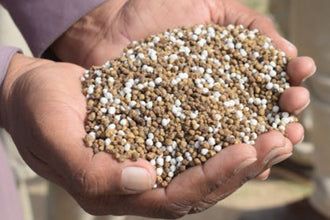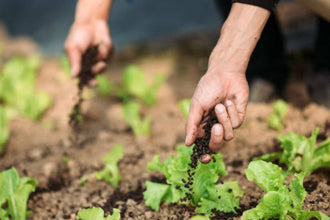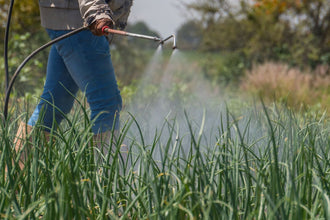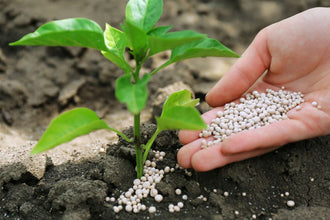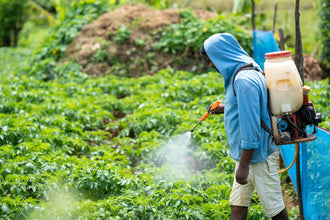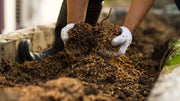
Pelletized manure really is the smart pick for anyone who wants to feed their plants without all the stress and guesswork. You get steady nutrition that lasts for months, plus your soil gets healthier over time. Way better than those synthetic fertilizers that give your plants a quick sugar rush and then leave them hanging.
Most people mess up their fertilizing because timing is tricky. Put down too much and you'll fry your plants' roots. Too little and they just sit there looking sad. But pelletized manure takes care of all that worry. It breaks down slowly as the tiny critters in your soil do their thing, so your plants get fed at just the right pace.
How Pelletized Manure Actually Works in Your Garden
The whole pelletizing thing is pretty smart when you think about it. They take regular manure and compress it into these little pellets that look kind of like rabbit food. All the good stuff is still there, just packed tight and without the smell that makes your neighbors give you dirty looks.
Once you work these pellets into your dirt and they get wet, that's when the magic starts. All those helpful bacteria and fungi in your soil start chowing down on the organic matter. As they eat, they slowly release nitrogen, phosphorus, and potassium. Your plants get fed steadily for about 6 to 12 weeks from just one application.
This slow process is what keeps your plants from getting shocked. Synthetic fertilizers hit your plants like a fire hose of nutrients all at once. Pelletized manure is more like a gentle rain that keeps coming. Your plants can actually use what they're getting instead of being overwhelmed.
Why Your Plants Won't Get Burned With Pelletized Manure
Chemical fertilizers are basically plant steroids mixed with salt. When you dump them on your soil, they create these super concentrated spots that can actually pull water right out of your plant roots. That's what causes those brown, crispy edges on leaves that everyone calls fertilizer burn.
Nobody wants to see their tomato seedlings looking like they got hit with a blowtorch. With pelletized manure, this just doesn't happen. The nutrients have to get broken down first before your plants can even access them. It's like having a built-in safety switch.
You also don't get those crazy growth spurts followed by plant crashes. You know how some plants shoot up super fast after you fertilize, then suddenly look terrible a few weeks later? That's because synthetic fertilizers wash away quickly, leaving your plants hungry again. Pelletized manure keeps delivering nutrition at a steady pace all season long.
Building Soil That Actually Works Better
Here's something most people don't think about. Pelletized manure doesn't just feed your plants today. It's actually making your soil better for years to come. All that organic matter feeds the tiny creatures living in your dirt, and they create these little clumps that make soil drain better and hold onto water better at the same time.
Sounds weird, but it's true. Clay soil that usually turns into concrete gets easier to work. Sandy soil that lets water run right through it starts holding onto moisture and nutrients. Your plants develop stronger root systems because they can actually spread out and find what they need.
This stuff compounds over time too. The more you use pelletized manure, the better your soil gets. Eventually you need less water, fewer pest sprays, and your plants just naturally resist problems better.
How Pelletized Manure Beats Other Slow-Release Options
Lots of fertilizers claim to be slow-release these days, but most of them are just synthetic fertilizers wrapped in some kind of coating. The problem is those coatings react to temperature in unpredictable ways. Hot summer days can make them dump all their nutrients at once. Cold spring weather can make them stop working entirely.
Pelletized manure doesn't care about temperature swings. It responds to moisture and all the tiny life in your soil. As long as your soil isn't completely dried out or frozen solid, the breakdown keeps happening at a steady rate.
Those specialty organic fertilizers like blood meal or fish emulsion target specific nutrients, but they're kind of one-trick ponies. Pelletized manure gives you nitrogen, phosphorus, potassium, plus a bunch of trace minerals your plants need. It's like a complete meal instead of just a protein shake.
The Money Side of Things
Sure, pelletized manure costs more upfront than the basic synthetic stuff you find at the big box stores. But when you do the math over a whole growing season, it usually comes out cheaper. One application lasts for months instead of having to reapply every few weeks.
Plus your soil keeps getting better, which means you spend less money on other stuff. Better soil means less watering, fewer disease problems, and stronger plants that don't need as much help. Most people see their garden expenses actually go down after a couple years of using pelletized manure regularly.
Getting the Most Bang for Your Buck With Application
Timing matters if you want to get the best results from pelletized manure. Put it down about a month before you plant anything. This gives the soil microbes time to start breaking things down so nutrients are ready when your plants need them most.
Don't just sprinkle the pellets on top and call it good. Work them into the top few inches of soil so they're actually in contact with dirt and moisture. A light watering after you apply them helps get the process started.
For plants that are already growing, scratch the pellets into the soil around where the roots spread out, not right up against the stem. You want to feed the feeder roots, which are usually spread out under the whole plant canopy.
When to Apply Throughout the Year
Spring applications are your bread and butter. Get pelletized manure worked into your garden beds as soon as you can work the soil. This gives you baseline nutrition that lasts through the whole growing season.
Fall applications are like making a deposit in your soil bank account. The pellets break down slowly over winter, so you start the next spring with rich, ready-to-go soil. Fall applications work especially well if you live somewhere with decent autumn rainfall.
Picking Good Pelletized Manure Products
Not all pelletized manure is created equal, and the cheap stuff usually isn't worth it. Look for products made from animals that actually ate decent food. Chicken manure pellets typically pack more nitrogen than cow or sheep manure, which can be good or bad depending on what you're growing.
Check the label for actual numbers. Good products tell you exactly how much nitrogen, phosphorus, and potassium they contain, plus the percentage of organic matter. Higher organic matter means better soil improvement over time.

Stay away from products that have been bulked up with sawdust or other fillers. You're paying for nutrients and organic matter, not cheap stuff that adds bulk but no value.
Storing and Using Pelletized Manure Safely
Keep your pelletized manure somewhere cool and dry. If it gets wet, the pellets start breaking down and you end up with a messy paste that's hard to spread evenly. A sealed container or at least a tarp keeps rain and humidity from ruining your investment.
Wear gloves when you handle the stuff. Concentrated organic matter can irritate your skin, and nobody wants to explain to their spouse why their hands smell like a barnyard. A dust mask isn't a bad idea either if you're spreading a lot of it on a windy day.
Why Pelletized Manure is Better for the Environment
Using pelletized manure is basically recycling on a garden scale. All that slow nutrient release means way less runoff into streams and lakes. Fast-acting synthetic fertilizers can wash away in heavy rain and cause algae blooms that kill fish and make water smell terrible.
The organic matter in pelletized manure also helps your soil hold onto carbon instead of releasing it into the atmosphere. Healthy soil with lots of organic matter is actually fighting climate change in a small way.
Instead of requiring factories and lots of energy to make synthetic fertilizers, pelletized manure takes waste that would otherwise be a disposal problem and turns it into something useful. Pretty smart when you think about it.
Why Fancy Chicken Pelletized Manure Stands Out From the Pack
Premium Organic Chicken Manure That Actually Delivers
Fancy Chicken takes everything great about pelletized manure and makes it even better. Their organic chicken manure pellets come from chickens raised on quality feed, which means the nutrients are more concentrated and bioavailable than your average barnyard waste.
The 4-2.5-2 NPK ratio in Fancy Chicken fertilizer hits that sweet spot for most gardens. You get enough nitrogen to keep leaves green and growing, phosphorus for strong root development, and potassium for overall plant health. This balanced blend works for everything from tomatoes to roses without overwhelming any particular plant type.
What makes Fancy Chicken different is the quality control. Each batch gets tested to make sure the nutrient levels stay consistent. No surprises, no guessing games about whether this bag will perform like the last one.
The Fancy Chicken Soil Building Advantage
Regular pelletized manure feeds your plants, but Fancy Chicken goes deeper. Their formula specifically targets soil health improvement through microbial activity. All those beneficial bacteria and fungi that break down organic matter? Fancy Chicken's pellets are designed to support and multiply these helpful soil creatures.
Here's what happens when you use Fancy Chicken consistently:
-
Soil texture improves dramatically within one growing season
-
Water retention increases, meaning less frequent watering
-
Plant immunity to pests and diseases gets stronger
-
Root systems develop more extensively throughout the soil
-
Organic matter levels build up year after year
The slow-release process with Fancy Chicken lasts about 8 to 10 weeks per application. That's longer than most other organic fertilizers because the pelletizing process creates a more stable product that breaks down gradually rather than all at once.
Application Made Simple With Fancy Chicken
Fancy Chicken pellets are sized just right for easy spreading. They don't turn to dust when you handle them, but they're not so big that they take forever to break down either. Apply them every 4 to 6 weeks during growing season for best results.
For vegetable gardens, work 3 to 4 pounds per 100 square feet into the top 4 inches of soil before planting. Flower beds need about 2 to 3 pounds per 100 square feet. Lawns get about 1 pound per 100 square feet, scattered evenly and watered in.
The pellets start releasing nutrients within days of getting wet, but the real feeding happens over weeks. This timing works perfectly with how plants actually grow instead of forcing them to deal with nutrient overload.
Cost-Effective Long-Term Garden Investment
Fancy Chicken costs more per bag than basic synthetic fertilizers, but the value shows up in your garden results. One application replaces multiple synthetic fertilizer treatments, and your soil keeps getting better instead of staying dependent on constant chemical inputs.
Most gardeners find they need fewer pest control products, less water, and fewer soil amendments after using Fancy Chicken for a full growing season. The initial investment pays for itself through reduced garden maintenance costs and better harvests.
Make Your Garden Thrive With Natural Nutrition
Fancy Chicken pelletized manure gives you everything you need for a thriving garden without the risks that come with synthetic fertilizers. Your plants get steady nutrition, your soil improves with every application, and you can feel good about choosing an environmentally responsible product that actually works better than the alternatives. Stop gambling with your garden's health and switch to the organic fertilizer that delivers real results season after season.
Starting Out With Pelletized Manure
Don't go crazy and treat your whole garden the first year. Pick a section and see how things go. Most vegetables and flowers do well with about 2 to 4 pounds of pellets per 100 square feet. Start on the lighter side and increase if your plants seem to want more.
Watch your watering after you apply pelletized manure. The decomposition process can temporarily tie up some water, so keep an eye on soil moisture levels. Don't let things dry out completely, but don't drown everything either.
Keep notes on how your garden responds. Notice improvements in plant health, soil texture, and how much you actually harvest. This information helps you fine-tune your approach for next season.
Pelletized manure turns regular gardens into productive, healthy spaces that get better every year. The steady nutrition, improved soil, and environmental benefits make it worth the switch from synthetic fertilizers. Your plants will thank you, and your wallet probably will too once you see the long-term results.




